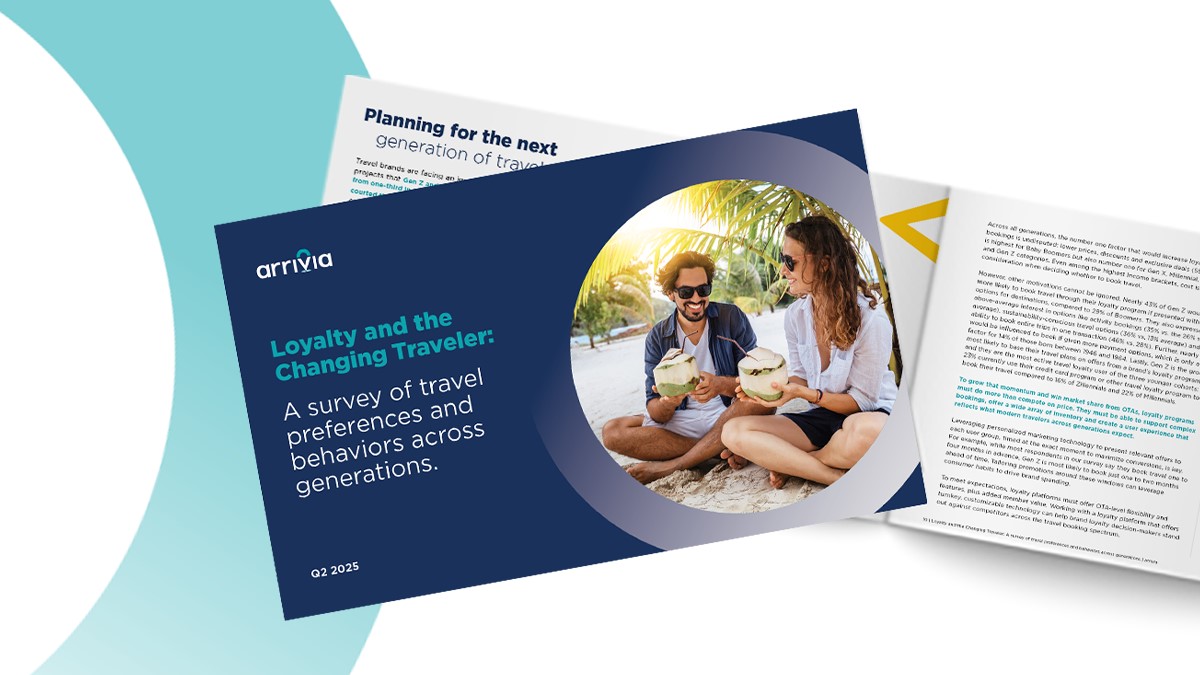Customer loyalty programs have never been as intrinsically linked to brand success as in today’s ultra-competitive business environment. Nearly 60% of consumers are willing to modify their spending to maximize loyalty benefits, which can explain why most shoppers in North America belong to 15+ loyalty programs—the highest enrollment levels in five years.
Active engagement in various loyalty programs is also at an all-time high, creating endless opportunities for organizations looking to scale (and satisfy) their customer base. However, before you can reap the rewards of a customer loyalty program, you must assess the strengths and weaknesses of various program models to gauge how they align with your target audience.
Here are eight popular loyalty programs to consider, complete with pros, cons, and examples to guide your decision.
1. Point-Based Loyalty Programs
Point-based loyalty programs are the most traditional and widespread types on the market. In points programs, customers can earn specific points for each transaction, activity, or loyalty milestone, such as 10 points for every $1 spent. Once buyers reach a specified threshold in the points system, points can be redeemed for rewards, discounts, or exclusive benefits.
Pros of Points Programs
- User-Friendly: Deploys a simple ‘earn and burn’ concept for consumers to easily track their points and understand their progress towards a reward.
- Flexible Rewards: Brands can offer various rewards (tangible products, discounts, and early sales access) to cater to diverse preferences.
- Customer Engagement: Regular notifications about earned points or expiring rewards can keep customers engaged and prompt repeat purchases.
- Generate Ancillary Revenue: Brands can allow customers to purchase loyalty points for reward redemption, creating additional revenue opportunities.
Cons of Points Programs
- Profit Margins: If the reward structure isn’t calibrated correctly, businesses may give away more value than anticipated, especially if the points-to-dollar conversion isn’t balanced with the company’s profit margins.
- Operational Complexity: Tracking points, especially if there are multiple ways to earn them, can introduce operational challenges that make robust backend systems a must to avoid discrepancies that might erode member trust.
- Delayed Gratification: If the threshold for redeeming points is too high, there’s a risk of customers becoming impatient or forgetting about points, creating dissatisfaction if and when those points expire.
- Complicated Refunds: It can be difficult to compensate customers for returns or refunds if purchases were made with a combination of points and cash.
Examples of Points Programs
Most airline frequent flyer programs, such as the Delta SkyMiles loyalty program, are points-based, where a member’s miles flown translate to points earned. Points programs are also popular in credit card rewards programs, where cardholders receive points for every dollar spent.
2. Tiered Loyalty Programs
Tiered loyalty programs are the second-most popular types of customer loyalty programs. Tiered programs categorize members into separate levels based on specific criteria, such as spending or engagement metrics. Customers who fulfill each criteria level move to higher tiers, unlocking progressively more valuable benefits. The most loyal customers are rewarded with exclusive perks.
Pros of Tiered Programs
- Motivational: The allure of becoming higher-tier customers and accessing coveted rewards can strongly incentivize incremental spending and increased engagement.
- Segmented Marketing: Tier differentiation allows brands to craft personalized marketing campaigns to enhance engagement, such as exclusive offers for top-tier members and incentive-driven campaigns for lower-tier customers.
- Customer Retention: More than 62% of consumers agree that status tiers are a valuable way to make customers feel appreciated, encouraging them to remain loyal shoppers.
- Recognition: Higher tiers often have badges, titles, or other recognition symbols that boost customers’ egos and serve as word-of-mouth marketing tools.
Cons of Tiered Programs
- Alienation: If the gap between tiers is too vast or the benefits are disproportionately skewed, lower-tier members might feel disenfranchised, undervalued, or overlooked.
- Relevancy: As market dynamics and customer preferences evolve, the perks associated with each tier level must be reviewed to ensure they remain attractive incentives.
- Operational Complexity: Brands must provide accurate, real-time tracking and status updates to maintain credibility, which can be operationally demanding.
- Communication Challenges: Customers must easily understand each tier threshold and how to advance to higher rewards; however, the variety of tiers and associated benefits can be complicated for communication.
Examples of Tiered Programs
Many airline loyalty programs, such as American Airlines AAdvantage, deploy a tiered system to segment members into Gold, Platinum, and Platinum Pro levels based on miles flown. Hotel chains like Marriott also maintain membership levels, in which lower-tier Silver Elite members earn late checkouts and higher-tier Titanium Elite members unlock exclusive room rates and lounge access.
3. Coalition Loyalty Programs
Coalition loyalty programs deploy a collaborative rewards structure where multiple brands work together to forge a united loyalty program where customers can earn and redeem points and rewards across the partnered network. These types of loyalty programs create a shared ecosystem for brands to tap into one another’s customer base and for customers to reap multiple rewards.
Pros of Coalition Programs
- Variety: Customers remain engaged in multi-faceted programs, in which they could earn points on groceries, for example, and then redeem them for a hotel stay or airline ticket.
- Shared Customer Base: Brands within a coalition can introduce their offerings to a broader audience (without the high acquisition costs) and develop cross-sell opportunities, such as a new car rental agency that accesses the clientele of an established airline.
- Budget Efficiency: The operational costs of the loyalty program, especially marketing and promotions, can be distributed across the participating brands to ensure higher efficiency in spending.
- Unified Data Insights: By collaborating, brands can gather consolidated data on customer preferences and behavior, leading to more targeted and effective marketing strategies.
Cons of Coalition Programs
- Collaboration Hurdles: When multiple brands converge, there’s always a risk of conflicting interests, brand image discrepancies, or disagreements on program direction that will demand transparent communication and clear written agreements.
- Technical Complexity: Integrating different brands into a seamless loyalty program demands a robust technological framework with consistent tracking, redemption, and customer service, which can be challenging.
- Diluted Brand Identity: Smaller or lesser-known brands must ensure more significant or aggressive partners do not overshadow their distinct identities.
- Reward Consistency: Customers’ perceptions of point value should be somewhat consistent, regardless of where it’s earned or redeemed, making reward consistency challenging.
Examples of Coalition Programs
One of the most popular coalition programs is the Canadian AIR MILES Reward Program, which allows members to shop and earn points with more than 300 participating brands. Points can be redeemed on travel services, complimentary branded merchandise, vouchers, and more.
4. Cashback Programs
Cashback rewards programs are some of the most consumer-preferred loyalty programs on the market. Cashback programs offer consumers a percentage of their total purchase amount in cash or credit that can be used towards future purchases. Financial service providers, retailers, and e-commerce platforms have widely adopted these types of loyalty programs to incentivize spending.
Pros of Cashback Programs
- Direct Value: Unlike points or other rewards, cashback provides an immediate, tangible benefit that customers appreciate through direct savings on their purchases.
- Simplicity: The appeal of cashback is its straightforwardness, as in there’s no conversion rate or redemption catalog, just simple math—spend this much to earn this much back.
- Flexibility: Cashback rewards can be used as the customer pleases, whether to offset future purchases, towards other benefits like gift cards or withdrawn as cash.
- Increased Spending: With promotional strategies, such as higher cash-back percentages on more significant purchases, businesses can encourage higher (and more frequent) spending
Cons of Cashback Programs
- Profitability: Offering too much cashback too frequently can eat into profit margins, meaning businesses must take a strategic approach to ensure it’s a win-win for both the company and its customers.
- Shallow Loyalty: While cashback offers a direct and attractive incentive, it sometimes translates to shallow brand loyalty, as shoppers often chase the best deals without a particular brand preference.
- Expectation Management: Acclimating customers to regular cashback offers can lead to dissatisfaction or backlash if brands suddenly reduce or discontinue the program.
- Operational Costs: Managing cash-back returns, especially those offered as direct cash, can sometimes involve transactional costs or additional operational requirements.
Examples of Cash Back Programs
Many financial institutions offer cashback as a reward for using their card. For instance, the Chase Freedom Unlimited Card earns 1.5% cash back on every purchase, 3% cash back for dining purchases, and 5% for travel purchases to incentivize continued spending.
Beyond the finance vertical, e-commerce and retail brands offer cashback to increase average order values and enhance customer loyalty. For example, websites like Rakuten provide rotating cashback offers when users shop through their portal, and many brick-and-mortar retailers offer a convenient mobile app to earn cashback on specific products or during promotional periods.
5. Subscription-Based Loyalty Programs
Subscription-based loyalty programs charge customers a monthly or annual recurring fee to access exclusive benefits, promotional offers, or products. These types of loyalty programs are also referred to as a paid program, this rewards structure is similar to a membership club, in which subscribers receive special privileges unavailable to non-subscribers. Participation in these programs has tripled since 2015.
Pros of Subscription Programs
- Steady Revenue: Recurring subscription fees provide companies with a consistent revenue stream that can help stabilize cash flow, especially during off-peak seasons.
- Exclusivity: Whether it’s early access to sales, exclusive products, or unique services, the allure of accessing something others can’t will significantly boost customer engagement.
- Enhanced Customer Experiences: Subscribers often receive premium treatment, from faster shipping and priority customer service to personalized content, which can lead to higher customer satisfaction and prolonged loyalty.
- Data Collection: Subscription models generate a vast array of customer preference and behavioral data, which can be leveraged for tailored marketing and product development.
Cons of Subscription Programs
- Value Justification: It’s the program’s responsibility to continuously offer value that justifies its subscription fee, meaning if customers feel they aren’t getting their money’s worth, they’ll quickly unsubscribe.
- Barriers: Asking customers to commit upfront financially can be a hurdle, especially when those unfamiliar with the brand or its offerings are reluctant to sign up without experiencing the program’s tangible benefits first.
- Churn Rate: Despite steady revenue, paid subscriptions require businesses to retain subscribers and have strategies to reduce their churn rate.
- Saturation: 53% of consumers pay for a subscription-based loyalty program (up from 32% in 2022), creating a risk of market saturation or subscription fatigue in which consumers become more selective about where they subscribe.
Examples of Subscription Programs
Amazon Prime is a leading subscription-based loyalty program, awarding members benefits like free two-day shipping and exclusive early access to movies, TV shows, ad-free music, and more. Other popular subscription programs include beauty box subscriptions, such as Ipsy, which allow subscribers to try a personalized assortment of products without buying full-sized versions.

6. Perks Loyalty Programs
Perks loyalty programs are distinct from other types of loyalty programs in that they offer customers rewards that are often unrelated to their actual purchases. Whether free shipping, extended return policies, or exclusive content, these perks enhance every member’s value proposition and overall shopping experience, regardless of current spending or engagement.
Pros of Perks Programs
- Enhanced Experience: By offering added advantages and unexpected rewards, perks programs directly enrich the overall experience, making customers feel more valued.
- Exclusivity: The simplicity of perks allows customers to feel like they’re part of an exclusive club without needing complicated point structures or tiers that dampen engagement.
- Flexibility: Brands can introduce new perks or modify ones based on seasonality, inventory, or market feedback, allowing for ultimate dynamic adaptability.
- Increased Engagement: The possibility of unexpected bonuses helps maintain customer engagement, as they always look for the next offer.
Cons of Perks Programs
- Relevance: Brands must ensure the perks are meaningful because rewards that don’t resonate with their primary audience can lead to apathy or negative perceptions.
- Cost: There’s a delicate balance to maintain with these programs, as continuously offering high-value or tangible perks can escalate operational costs and affect profit margins.
- Transparency: Customers must quickly understand the earning criteria for perks, even if they’re a simple sign-up form, as any perception of obscurity can lead to mistrust.
- Neglects Long-Term Loyalty: With all members earning the same perks, including new customers, a brand’s long-term shoppers and frequent spenders can feel neglected.
Examples of Perks Programs
Perks programs have become increasingly popular in e-commerce, where brands can offer shoppers limited-time promotions to drive purchases and encourage membership sign-ups to gain consumer information. For instance, the Zappos VIP program—on the Zappos e-commerce website only—offers free shipping and rotating promotions such as 10X points.
7. Value-Based Loyalty Programs
Value-based loyalty programs reward customers in ways that reflect a brand’s core ethos or values. These types of loyalty programs often resonate with customers’ personal beliefs or charitable causes, creating a bond that goes beyond transactional relationships. Value-based programs ultimately encourage customers to become brand advocates for the organizations that align with their vision.
Pros of Value-Based Programs
- Deeper Connections: Recent research confirms that today’s shoppers seek to establish sincere connections with brands that align with their values, fostering a deeper level of commitment and brand loyalty.
- Brand Affinity: An alignment of values attracts a specific customer base that feels a genuine connection with the brand, often leading to advocacy and organic word-of-mouth marketing.
- Authentic Engagement: The rewards or incentives in value-based models often promote meaningful interactions, with customers engaging with the brand on multiple levels.
- Competitive Differentiation: In a crowded market, a value-based loyalty program that focuses on ethos, not just features, can distinctively set a brand apart from competitors.
Cons of Value-Based Programs
- Niche Appeal: By design, these programs cater to a specific subset of customers who resonate with the brand’s values, potentially alienating a broader audience.
- Commitment: Once a brand professes specific values, it must genuinely uphold them in all business practices, as any discrepancy can lead to negative publicity.
- Perceived Authenticity: Brands must ensure their value-based programs aren’t marketing gimmicks, especially when authenticity is critical to consumer relationships.
- Limited Ancillary Revenue: While some value-based programs accept donations toward charitable causes, there’s no tangible revenue stream to capitalize on.
Examples of Value-Based Programs
The TOMS One for One model is a value-based loyalty program that has withstood the test of time. TOMS, a shoe brand launched in 2006, has given away one pair of shoes to a child in need for every pair they’ve sold since its inception. Over time, the TOMS brand has become synonymous with charitable initiatives, gaining thousands of loyal shoppers.
8. Discount-Based Loyalty Programs
Discount-based loyalty programs acquire and retain members by providing customers with regular promotional pricing for products and services. These types of loyalty programs are often seen in physical retail and online shopping environments, loyalty programs prioritize immediate monetary value to incentivize purchase behaviors. In other words, they enable customers to spend more, more frequently.
Pros of Discount Programs
- Instant Appeal: Lower prices’ immediate and tangible benefits are universally attractive rewards, making it easy for customers to grasp a program’s value.
- Purchase Encouragement: By setting time-bound discount offers, especially during sale seasons or stock clearance periods, brands can create urgency and prompt customers to make quicker purchase decisions.
- Volume Boost: Given the price reduction, there’s potential for increased sales volume, which can compensate for individual unit price drops and capture more wallet share.
- Flexibility: Discounts can be adjusted based on inventory, seasonality, or customer segments, allowing brands to deploy offers when they can generate maximum impact strategically.
Cons of Discount Programs
- Profit Margins: A business model that relies on discounts might need help maintaining healthy profit margins. It is vital to strike a balance between attractive discounts and sustainable profitability.
- Transient Loyalty: While discounts might drive sales, there’s always a risk of customers switching loyalty programs for a brand with a steeper discount, negating loyalty.
- Brand Perception: Over-reliance on discounts might inadvertently position a brand as “cheap” or “low-value” in customers’ minds, cheapening a brand’s perceived value.
- Dependence: Once customers are accustomed to regular discounts, weaning them off such offers might be challenging without facing backlash or decreased sales.
Examples of Discount Programs
Many physical retail stores offer membership cards to enable members to receive exclusive discounts on select items or categories consistently. One example is King Soopers Shopper Rewards, a grocery loyalty program that provides members digital coupons via a branded mobile app and in-store QR codes. Store-wide discounts are often stackable for members.
Enhance Your Loyalty Strategy with arrivia
Navigating the numerous types of loyalty programs can seem daunting. However, with the right partner, it can become an intuitive process tailored perfectly to your brand and customer base. Arrivia, established in 1997 and now the world’s largest stand-alone travel loyalty provider, offers a travel technology and loyalty solution that prioritizes value at every consumer touchpoint.
Arrivia seamlessly integrates with existing rewards programs to provide exclusive savings on an extensive range of travel options. Whether you’re experienced with travel rewards or first launching a program, arrivia ensures an enriching loyalty experience that scales with your customers’ evolving travel needs. Learn how arrivia reimagines loyalty by visiting our About Us page!




